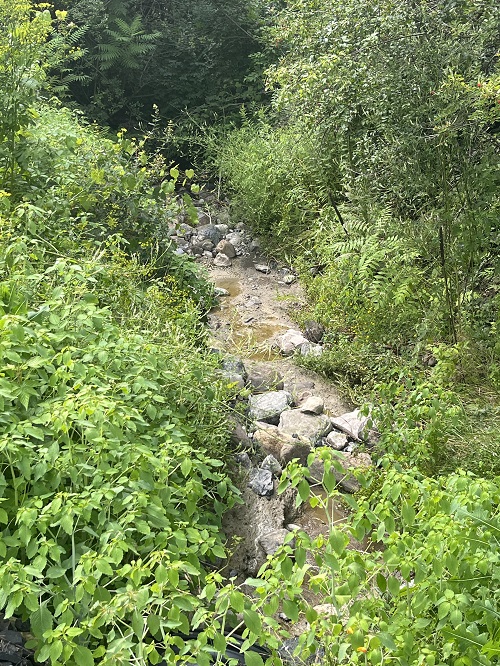
Our gully stabilization services refers to the implementation of measures and techniques to prevent or mitigate erosion and instability in gullies. A gully is a landform characterized by a deep channel that has been eroded by the action of water, often caused by runoff from rainfall. Gullies can form in various environments, including agricultural areas, construction sites, and natural landscapes.
Stabilizing gullies is important to prevent further erosion, protect the surrounding landscape, and maintain soil health. The stabilization process typically involves a combination of engineering and ecological approaches. Some common methods for gully stabilization include:
Vegetative Stabilization: Planting vegetation in and around gullies helps bind the soil together, reduce water runoff, and stabilize the gully banks. Grasses, shrubs, and trees with extensive root systems are often used for this purpose.
Erosion Control Structures: Various structures such as check dams, silt fences, and erosion control blankets can be installed in gullies to slow down water flow, trap sediment, and reduce erosion. These structures are designed to dissipate the energy of flowing water and promote sediment deposition.
Terracing: Constructing terraces along the gully’s slope helps to reduce the speed of water runoff and minimizes soil erosion. Terracing involves creating steps or platforms on the slope, which can be vegetated to enhance stabilization.
Rock and Gabion Structures: Placing rocks or constructing gabion walls (cages filled with stones) in gullies can help stabilize the soil and prevent further erosion. These structures provide physical barriers that resist the erosive forces of water.
Hydroseeding: This involves spraying a mixture of seeds, mulch, fertilizer, and tackifiers (substances that bind the mixture to the soil) onto the gully area. Hydroseeding promotes quick vegetation growth, which aids in stabilizing the soil.
Bioengineering Techniques: Using live plant materials in combination with traditional engineering methods is known as bioengineering. This approach utilizes the natural characteristics of plants to stabilize slopes and control erosion.
Gully stabilization practices are often site-specific, and the selection of appropriate techniques depends on factors such as the severity of erosion, soil type, climate, and the specific goals of the stabilization project. Successful gully stabilization efforts contribute to the conservation of soil and water resources, reduce the risk of landslides, and enhance overall environmental sustainability.
